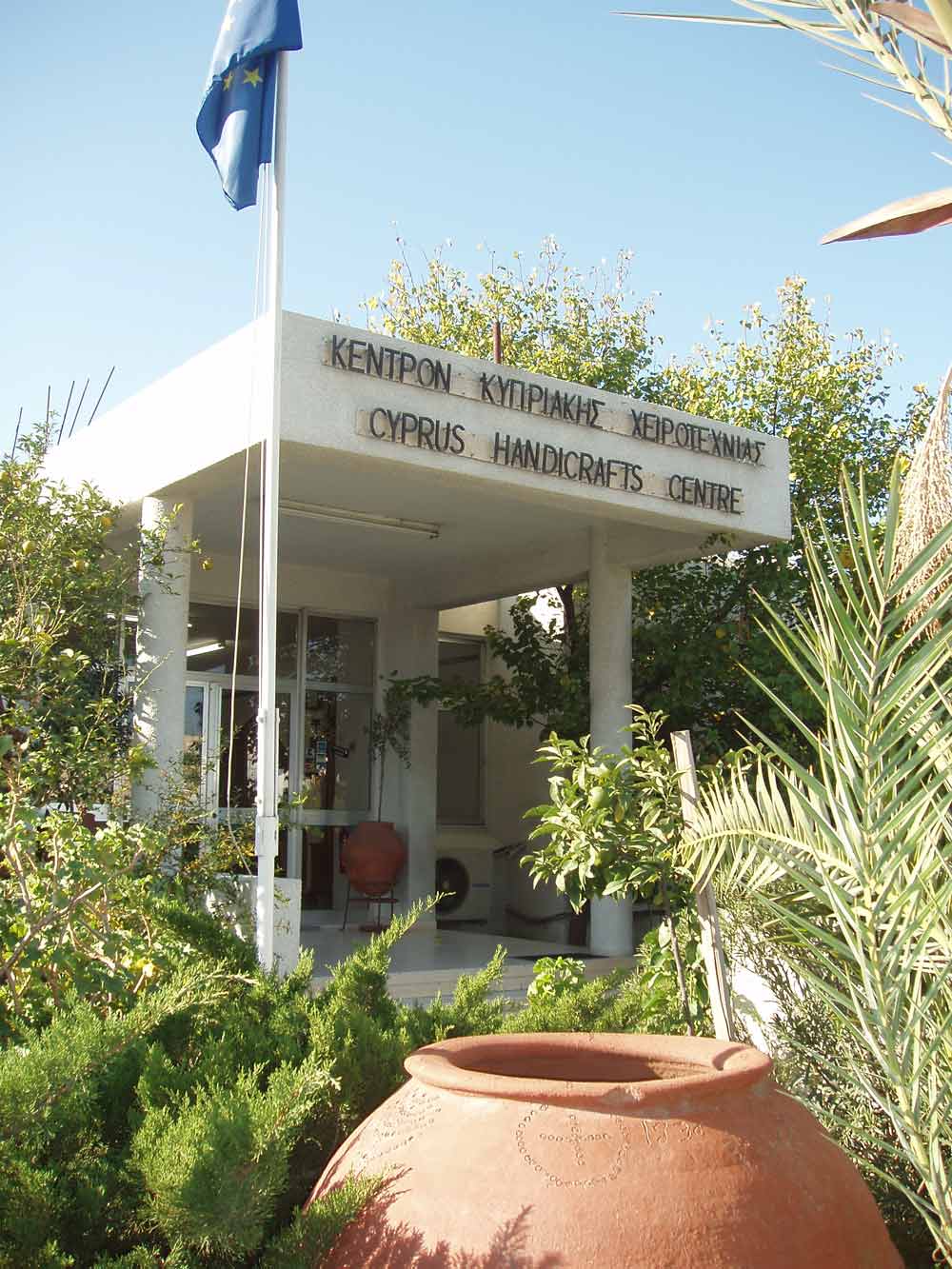Cyprus Handicraft Centre

The Cyprus Handicraft Centre of the Ministry of Commerce, Industry and Tourism, is located at Athalassa Avenue in Lefkosia, near the junction of the Lefkosia - Lemesos highway. This Centre has as its basic aim the revitalization of our traditional folk art and its gradual development into modern handicraft. It is worth visiting, so allow us to guide you around.
Passing through the main entrance of the Centre, we find ourselves in the hall where the information/reception desk is situated. Of special interest are the walls which are lined with ceramic tiles and ancient figures and the carved desk with designs and motifs. To the left of this hall are the administration offices and to the right the prototype shop.
Selected samples of handicrafts are exhibited in the shop covering all types of traditional crafts and are made either by the Handicraft Service craftsmen or by the private sector. The items displayed at the Centre´s shop are characterized by high quality, aesthetic beauty, Cypriot character, functionality and acceptability in the market.
Inside the Centre there is an impressive garden, the beauty of which is relaxing for the visitor. Around the garden are the workshops where instructors and craftsmen carry out a wide range of tasks, such as:
a) research and study of traditional objects of folk art,
b) study, design and creation of new items,
c) improvement of the items already in production,
d) experimental work with new raw material and techniques,
e) training of new craftsmen,
f) production.
The first workshop in line is that of embroidery. Here, all the original samples upon which embroidery production is based are made, such as "lefkaritika", "athienitika", "moditika", lace, crochet, cross-stitch etc. The "lefkaritika" lace is of course the most exceptional with its varied motifs and patterns and it is distinguished by its uniqueness.
The second workshop is that of weaving. Working on traditional looms, experienced weavers revive all types of fabrics, such as the "karpasitika", the "lefkonitziatika" with their decoration and bright colours, the "fithkiotika" with their colourful geometrical motifs and many others - a real pride of weaving.
Third in line is the tapestry workshop. Much patience and perseverance is required to weave on special looms the woolen and cotton tapestry with images and designs from traditional patterns.
The wood-work workshop is the fourth in line. Pine and walnut wood is carved with great skill by woodcarvers to depict reliefs with designs of birds, flowers, plants, animals, rosettes on chests, carved shelves "souvantzes", mirrors and other furniture.
We then come to the pottery - ceramics workshop where we can admire the craftsman giving shape to a lump of clay turning on the wheel. At another table craftswomen gracefully decorate the pots. The numerous types of pots around us, glazed and unglazed terracotta, ancient and Byzantine imitations, impress and bear witness to our long tradition in the craft of pottery and ceramics.
The workshop of artistic metalwork further down, reminds us that Cyprus was once called the island of copper. The craftsman taps rhythmically and forms a copper or silver item with representations copied from pots of the archaeological museum and from the Curium and Paphos frescoes. Cauldrons, pans and other identifiable items remind us of the ancient craft of the metalwork.
In the workshop of basket weaving and general handicraft which follows, we see baskets, panniers and sieves with many designs made from the stems of a special kind of wheat as well as batik, macramé, mosaics, framed pictures made out of silk cocoons and various little ornaments.
Eighth in line comes the leather workshop. In this workshop modern, functional and useful items are made using a combination of real leather and embroidery or woven material. Handbags, purses, glass cases are just a few of the many items of the leather workshop.
The ninth and last workshop is that of garment making. Here, the traditional ladies and men’s costumes are sewn, such as the "karpasitiki" and "paphitiki", the large breeches and waistcoats. Dolls dressed in traditional outfits are also made here.
Our tour ends in the exhibition hall. A rich and varied range of handicrafts are exhibited and presented in an impressive way.
Modern folk art parades before us. This is our own cultural heritage which is the duty of each one of us to preserve and perpetuate because it is our historical and national identity.